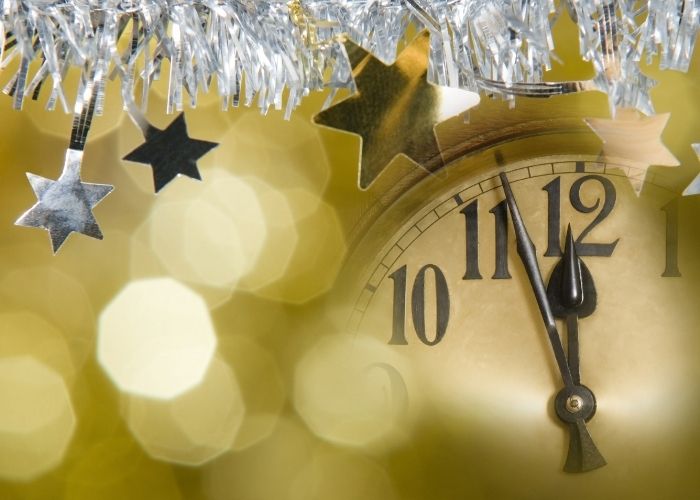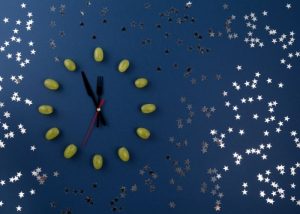InSpain.News compares some of the more superstitious Spanish and Scottish traditions and celebrations for the last day of the year. What traditions will you follow?
New Year´s Eve or Nochevieja (as it is known in Spain) or Hogmanay (as it is known in Scotland) is a fantastic time of the year to say goodbye to the old one and welcome the new one. Being Scottish and living in Spain, these are the traditions I know, and will follow. But we would love to know what other UK and worldwide rituals there are for the last day of the year.
Lottery
El Gordo has already been drawn with thousands of lucky people winning. If you weren´t lucky then, there is also El Niño which is drawn on Friday January 6. You can buy tickets now and hope to start the new year with a winner. But the Spanish are not content just to buy a ticket and keep their fingers crossed. There are many myths attached to giving you an “edge” in the stakes. Many believe rubbing your ticket against a pregnant woman´s belly, a bald man´s head or a black cat´s back will make you a winner. However, in Galicia, ticket holders hang their tickets on a horseshoe or put them next to a figure of the Virgin Mary. Another superstition is to carry an iron key in the same pocket as your lottery ticket.
If you are tuning into the UK, the National Lottery Big Bash is an event not to be missed. Some of the biggest stars in the UK are coming together for this event on New Year’s Eve which takes place at the OVO Arena Wembly. The star-studded program will take a look back at how lottery money has made a difference to ordinary people.
In Scotland, the lucky traditions are more generic and not specific to the lottery. However, people are known to touch wood, or share a wishbone and make a wish. Or if you happen to find a penny, pick it up, and all day long you will have good luck.
Underwear

You may have wondered why suddenly the shops and markets are filled with red underwear for sale. This is for those who want to be lucky in love. In some parts of Spain, if you gift some red underwear, this will give you luck. However, in other parts, you must give your underwear away by the end of the night!!
In Scotland, the only tradition regarding underwear that I know of is for the kilt-wearing men amongst us, tradition is for no underwear to be worn!
Food
In Spain, the day after, when the festivities and parties are over, many families gather on New Year’s Day for a lunch of lentil and chorizo soup or stew. Lentils are said to bring prosperity as they represent small coins, and therefore bring wealth and good fortune. Not to mention, this also makes a hearty meal – great of a hangover cure!
In Scotland, Irn Bru is the great hangover cure. But in Scotland, we tend to have our lentils the night before, on New Year’s Eve in the form of a soup followed by steak pie. This is to help ready the stomach for the festivities to come.
Another popular, although rather bizarre hangover cure for January 1 in Scotland, is to have a swim in a freezing river.
As the clock strikes
As the minutes tick down to midnight on New Year’s Eve in Spain, people start to gather. Crowds in the city’s main plazas, restaurants or in homes with friends and family to watch the clock chime midnight. As it gets closer to midnight, everyone will have 12 grapes at the ready.
Each of these twelve grapes is said to represent a month of the year. With every chime of the clock at midnight, you must eat one grape to bring one month of luck in the new year. All 12 must be swallowed before the clock strikes 12. Editor´s tip – buy seedless!
Most supermarkets will sell packs of 12 ready for you.
Golden cava
Also, in Spain, to bring not just good fortune, but an actual fortune in the new year, Spaniards drop a gold object into their glass of cava before the midnight toast.
From golden wedding rings to gold coins, it all goes in the glass! But for the good luck charm to work, you must drink the entire glass of cava in one go after the midnight toast and retrieve your golden object.
However, some say you can bring different types of luck depending on what you put in your glass. If you are looking for love, drop in a strawberry, cherry, or raspberry. If you want fidelity, make sure the golden object is your wedding ring. Or if you are looking for prosperity, drop in a golden coin.
And as if the cava and grapes weren´t enough for the Spaniards, these are normally accompanied by a “bolsa de cotillón”. This is basically a party bag with hats and streamers and whistles etc. You can make your own or buy these from most supermarkets.
Redding the house
Traditionally in Scotland, the day begins with the whole house being cleaned. This is called “redding the house”. Like a spring clean, the Scots have a New Year’s Eve clean to welcome in the New Year. Because starting the New Year with a dirty house is bad luck. When open fires were common, people would clear the ashes and lay a new fire for the New Year. This is one reason coal plays an important role in the Scottish new year.
 No alcohol should pass the lips before midnight. But just before midnight, everyone must have a glass (traditionally with whisky) in their hand ready to toast the bells. The front and back doors of the house should be opened to see out the old year and welcome in the new year.
No alcohol should pass the lips before midnight. But just before midnight, everyone must have a glass (traditionally with whisky) in their hand ready to toast the bells. The front and back doors of the house should be opened to see out the old year and welcome in the new year.
If there is a piper in the area where you live in Scotland, you can be sure the bagpipes will be out playing in the street after the bells chime midnight. And don´t forget, the traditional song that is sung all over the world when groups of people cross hands and join in with the words of Auld lang syne. Not many know, but the song was written by Scot´s poet, Robert Burns (Rabbie Burns).
Right foot and first foot
To get off on the right foot, the first step of the new year must be the right one in Spain. Many people believe that to kick the new year off on the right foot, you must literally use your right foot. Therefore, the first step you take after the bells chime midnight should be with the right foot.
By putting your right foot forward first, you are on the way to attracting love, fortune, and luck in the new year.
In Scotland, however, the first foot means something totally different. As celebrations traditionally began in the home, after the midnight toast, the family would visit a neighbour or friend´s house. The first person to be welcomed into the house is called the first foot. To bring health, wealth, and happiness to the home, that person should ideally be male, tall, dark, and handsome. He should also carry a gift, usually coal and their “carry out” which is the bottle of whisky the first toast was taken from. The coal was important for the homes as it provided heat, and the ability to cook food over the fire. Therefore, it brought abundance! The saying attached to this is “Lang may yer lumb reek”.
The year ahead
Some families in Spain, write their burning desires and wishes for the new year on paper and burn them all in a small saucepan. This is said to ensure they will be fulfilled.
In Scotland, we write our new year´s resolutions. But generally, they are already broken before the first week is out.
Please tell us all about your traditions.
Related article: Traditional festive celebrations in Spain



